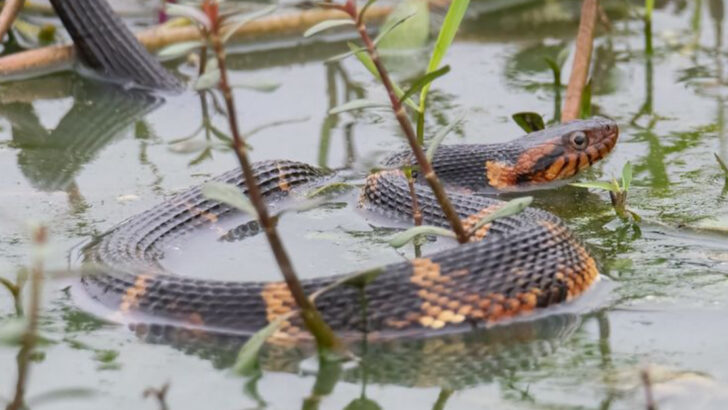Snakes don’t need legs to be fast—and in water, they’re absolute ninjas.
You might think of them as slithering through dry grass or coiled under a rock, but some of the most skilled swimmers in North America are reptiles with scales and serious stealth.
They glide through lakes, rivers, swamps, and even your backyard pond like it’s their personal racetrack. Some are harmless. Some… not so much.
From the graceful to the sneaky to the downright spooky, these 16 water-loving snakes will change the way you look at that peaceful ripple on the surface. Ready to meet the swimmers?
Northern Water Snake
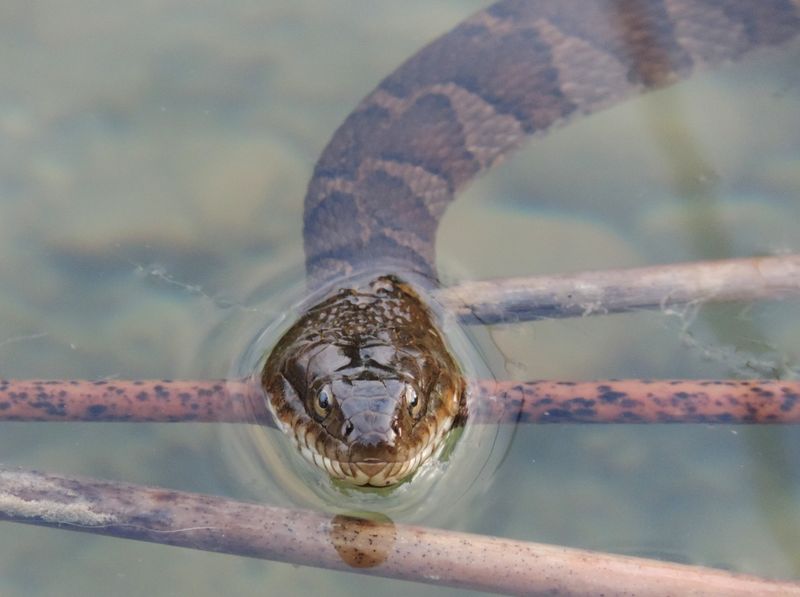
The Northern Water Snake is often seen gliding across calm lakes and streams. With its banded brown and black pattern, it blends seamlessly into the aquatic landscape. These snakes are non-venomous but often mistaken for venomous snakes, leading to unwarranted fear.
Observing them in their natural habitat reveals their grace and agility as they hunt for fish and amphibians. Surprisingly, they can remain submerged for considerable periods, showcasing their adeptness in water.
Their presence in water highlights the diversity of habitats that snakes can adapt to, making them a fascinating subject for enthusiasts.
Cottonmouth
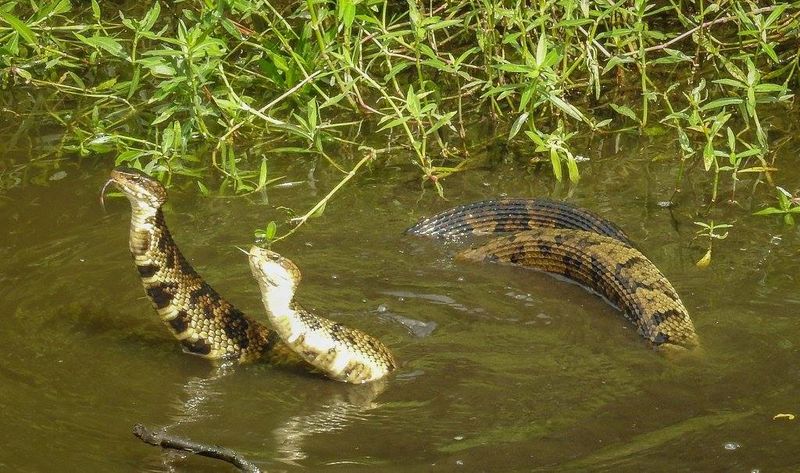
The Cottonmouth, or Water Moccasin, is a venomous snake with a reputation that precedes it. Often found in the southeastern United States, these snakes are at home in marshes and swamps. Their dark, thick bodies and characteristic white mouths make them easily identifiable.
These snakes are known for their defensive behavior, which includes showing the white interior of their mouths as a warning. Despite their fearsome reputation, Cottonmouths play a crucial role in controlling amphibian populations.
Their adaptability to both land and water environments makes them a significant part of their ecosystem.
Diamondback Water Snake
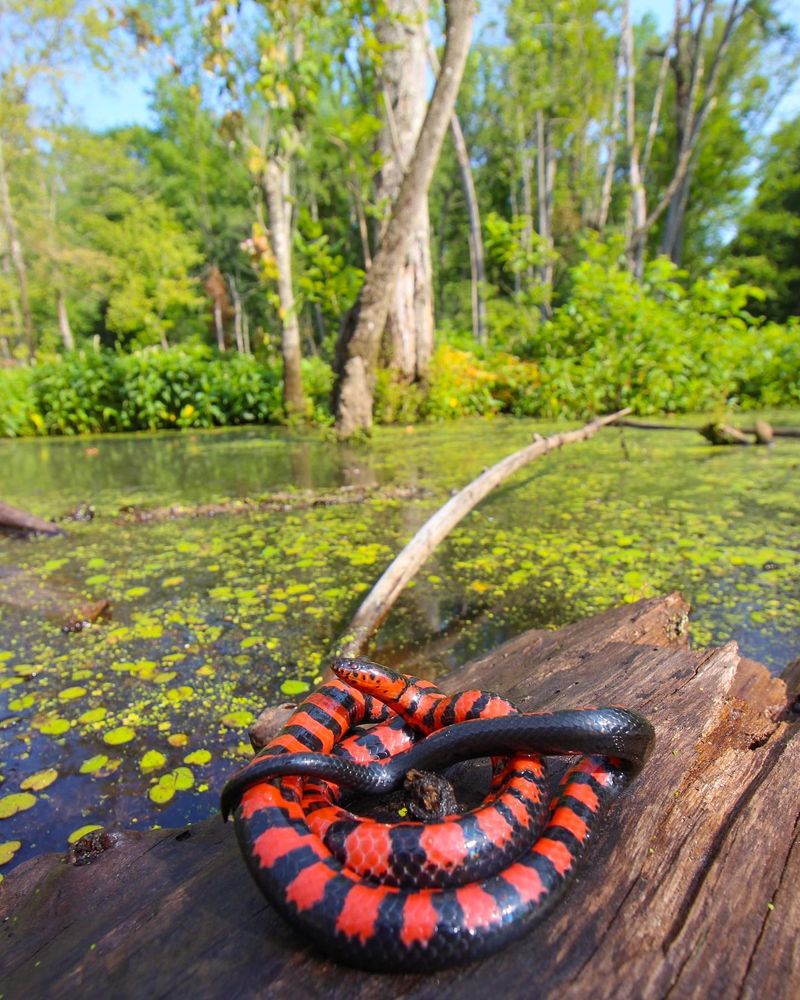
The Diamondback Water Snake is a non-venomous species that thrives in the waterways of the southern United States. Its patterned scales resemble those of the rattlesnake, often leading to confusion.
These snakes prefer slow-moving waters, where they hunt for fish and frogs. Their ability to remain motionless makes them excellent ambush predators.
While they are not dangerous to humans, their defensive behaviors can be alarming. Understanding their role as predators helps appreciate the balance they bring to aquatic ecosystems.
Garter Snake
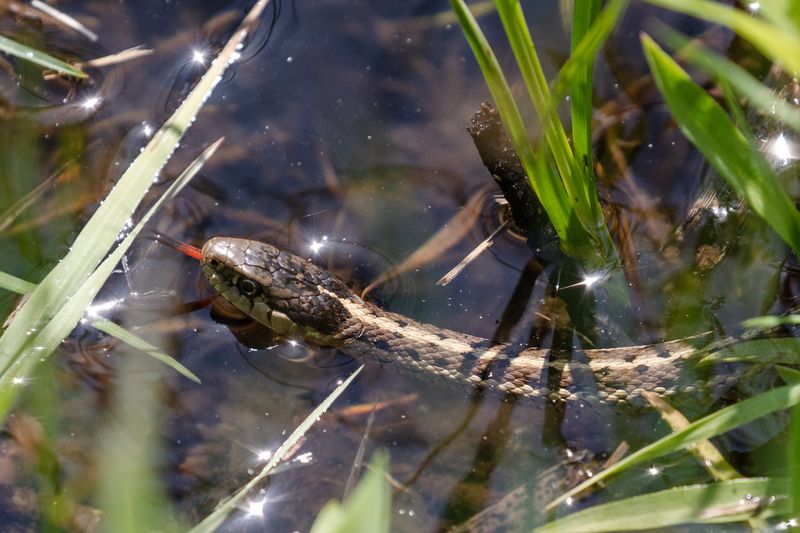
Garter Snakes are among the most common snakes in North America. They are often found near water sources, where they hunt small fish and amphibians.
Their striking green and yellow stripes not only provide camouflage but also add to their visual appeal. These snakes are harmless to humans and play a vital role in controlling pest populations.
Their presence near water showcases their versatility and adaptability, making them a common sight for nature enthusiasts and hikers.
Plain-bellied Water Snake
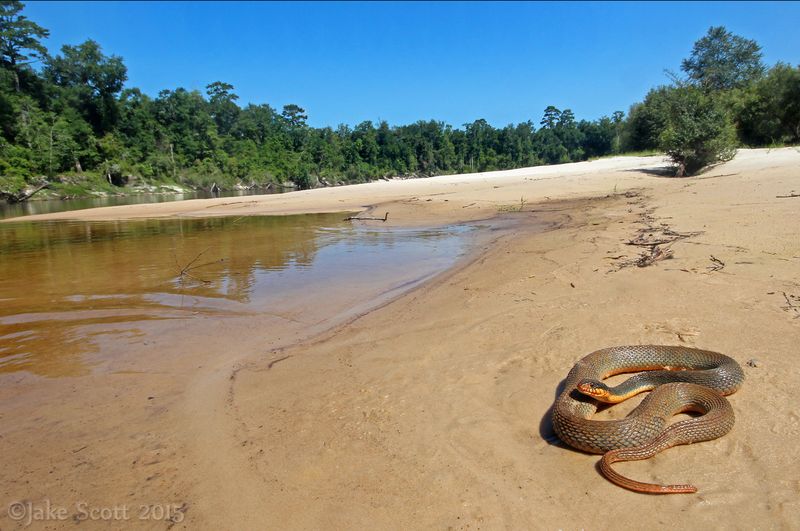
The Plain-bellied Water Snake is well known for its distinctive appearance. Found in the central and southeastern United States, its bright orange or yellow belly sets it apart from other species.
This non-venomous snake is often seen basking on branches overhanging water or swimming gracefully beneath the surface. Its diet consists mainly of fish and amphibians.
Despite their defensive nature when threatened, these snakes are not dangerous to humans and are an integral part of their aquatic ecosystems.
Brown Water Snake
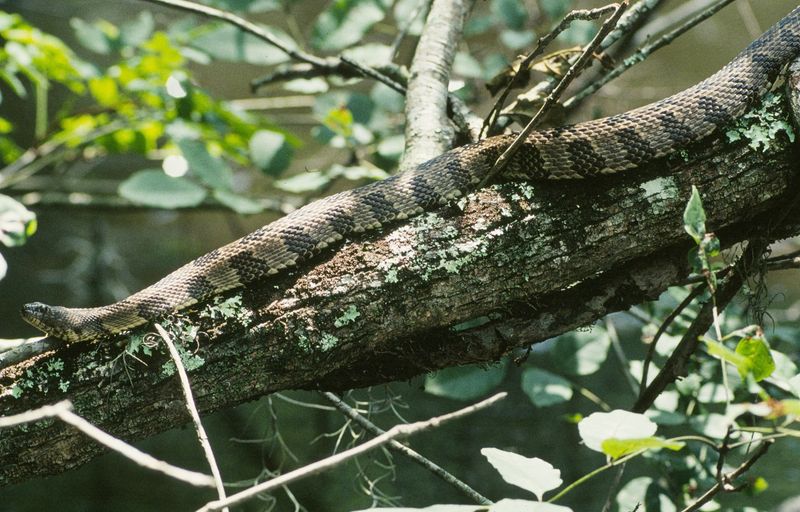
Brown Water Snakes are large, non-venomous snakes found in the southeastern United States. They are often mistaken for the venomous Cottonmouth due to their similar habitats and appearance.
These snakes are adept swimmers and can often be seen basking on branches or rocks near the water’s edge. They primarily feed on fish, using their sharp teeth to capture slippery prey.
Their presence highlights the rich diversity of the southeastern aquatic environments, making them a subject of interest for herpetologists and nature lovers alike.
Green Water Snake
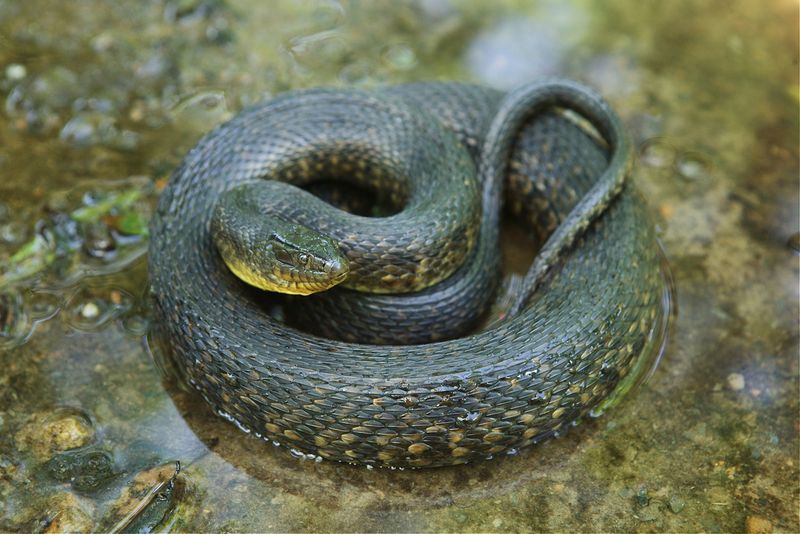
The Green Water Snake is a non-venomous species that thrives in the wetlands of the southeastern United States. Its olive-green color provides perfect camouflage among the reeds and aquatic plants.
These snakes are skilled swimmers and are often seen hunting for fish and small amphibians. Their presence is a testament to the rich biodiversity of their wetland habitats.
Although they may appear intimidating, Green Water Snakes are harmless and play an important role in controlling fish populations.
Banded Water Snake

Banded Water Snakes are a common sight in the southeastern United States. Their distinctive dark bands across a lighter body make them easily identifiable.
These non-venomous snakes are adept at hunting fish and amphibians, often seen basking on rocks or logs near water. Their defensive behavior includes flattening their bodies to appear larger when threatened.
Understanding their role in the ecosystem helps appreciate the balance they bring to the habitats they inhabit, showcasing the intricate web of life in aquatic environments.
Broad-banded Water Snake
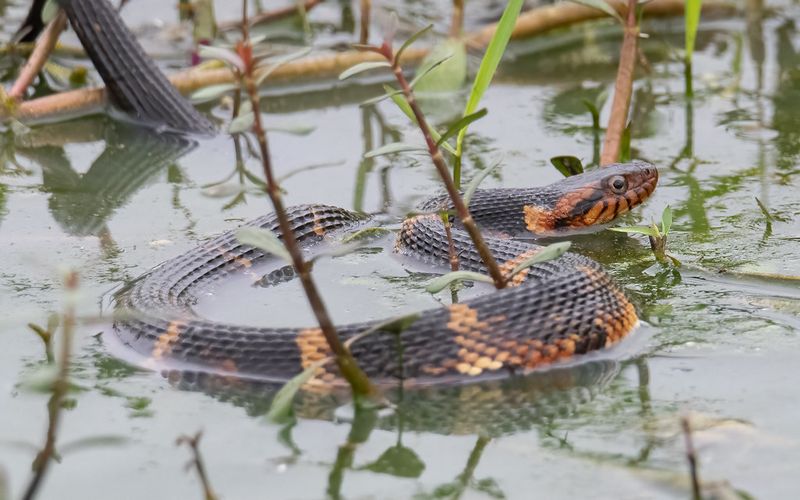
The Broad-banded Water Snake is a distinctive non-venomous snake found primarily in the central and eastern United States. Its broad, dark bands contrast against a lighter background, making it recognizable.
These snakes are active hunters, often seen swimming in slow-moving waters in search of fish and frogs. Their presence in diverse aquatic habitats highlights their adaptability.
Despite being harmless, they are sometimes mistaken for venomous species, leading to unwarranted fear. Promoting understanding and awareness is key to their conservation.
Florida Green Water Snake
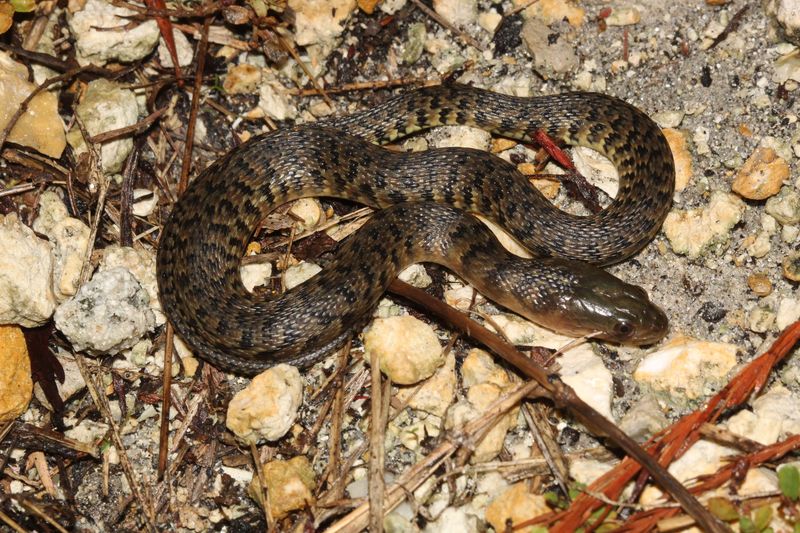
Florida Green Water Snakes are a vibrant addition to the waterways of Florida. Their bright green color provides excellent camouflage among the lush vegetation.
These non-venomous snakes are commonly found in swamps and marshes, where they hunt for fish and amphibians. Their adaptability makes them a vital part of the ecosystem.
Educating people about their non-threatening nature helps in their conservation, ensuring these beautiful creatures continue to thrive in their natural habitats.
Red-bellied Water Snake
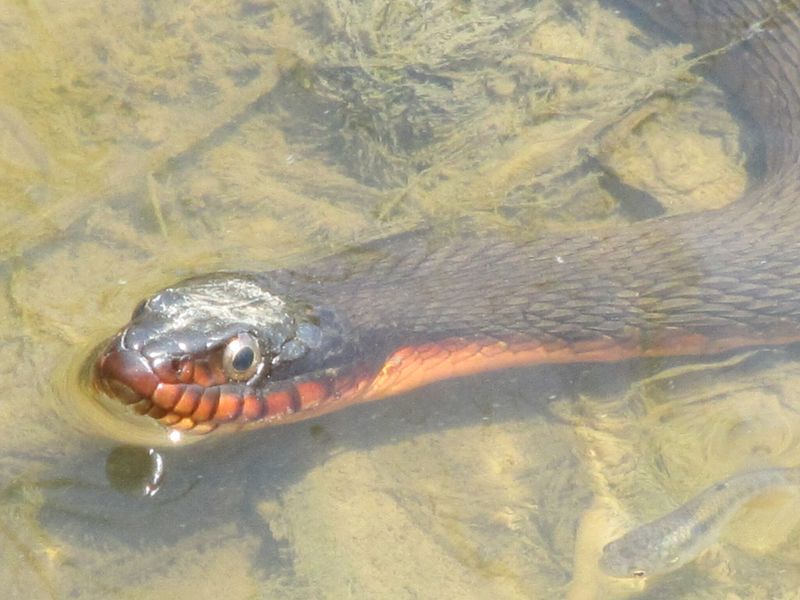
The Red-bellied Water Snake is a striking non-venomous species found in the southeastern United States. Its vivid red belly is a stark contrast to its otherwise dark body.
These snakes are often seen in shallow streams and ponds, where they hunt for fish and amphibians. Their presence is an indicator of healthy aquatic environments.
By understanding and appreciating their role, we can contribute to their conservation, ensuring these vibrant snakes remain a part of our natural world.
Salt Marsh Snake
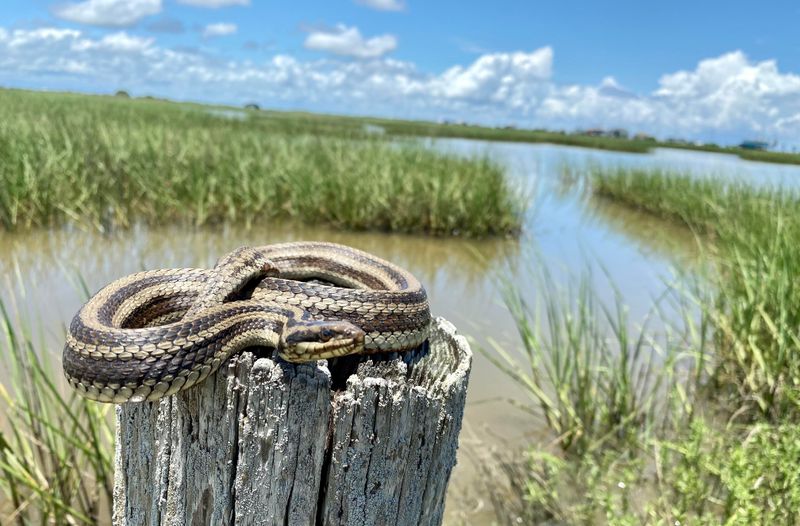
The Salt Marsh Snake is uniquely adapted to the coastal marshes of the southeastern United States. Its varying color patterns offer camouflage in the salty, tidal environments it calls home.
These non-venomous snakes are well-suited to the brackish waters of marshes, feeding primarily on small fish and crustaceans. Their presence highlights the rich biodiversity found in these coastal habitats.
Awareness of their ecological role is essential for conservation efforts, ensuring these snakes continue to thrive in their unique environments.
Western Ribbon Snake
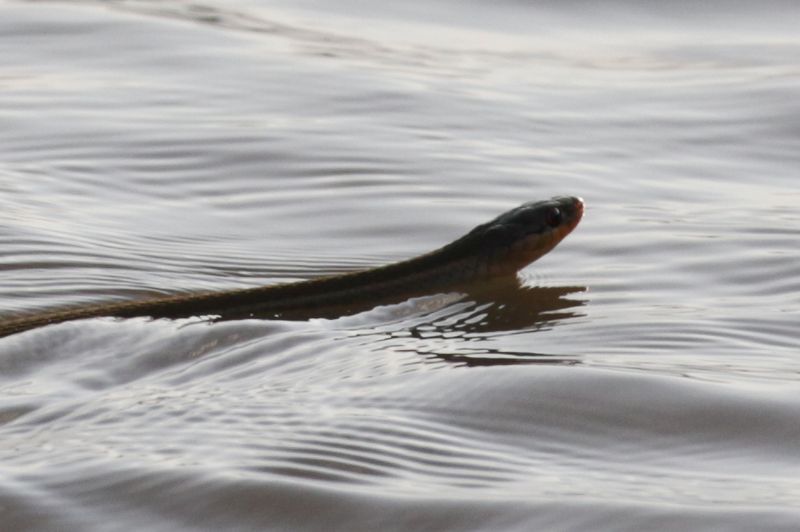
The Western Ribbon Snake is a slender, non-venomous snake found near freshwater sources in the central United States. Its vivid stripes make it a beautiful sight as it moves through its aquatic surroundings.
These snakes are active hunters, often seen darting through grass or swimming with agility. Their diet consists of small fish and amphibians.
Appreciating their role in controlling pest populations can lead to greater conservation efforts, ensuring these elegant snakes remain part of our natural landscapes.
Crayfish Snake
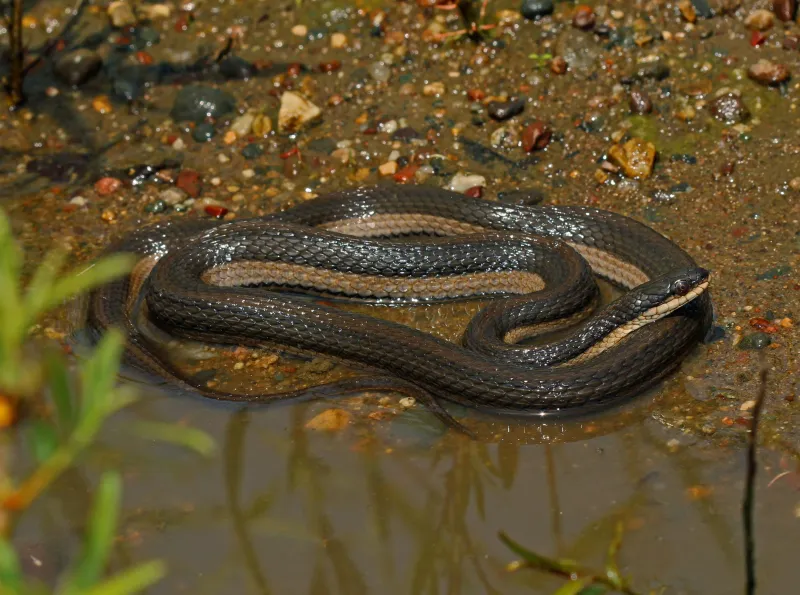
The Crayfish Snake, as its name suggests, has a diet primarily consisting of crayfish. Found in the southeastern United States, these non-venomous snakes are often seen near muddy riverbanks and swamps.
Their brown and yellow markings provide excellent camouflage in their preferred habitats. Observing them reveals their skillful hunting techniques and adaptability.
Appreciating their ecological role can help in promoting their conservation, ensuring they continue to be a part of the diverse aquatic ecosystems.
Glossy Crayfish Snake
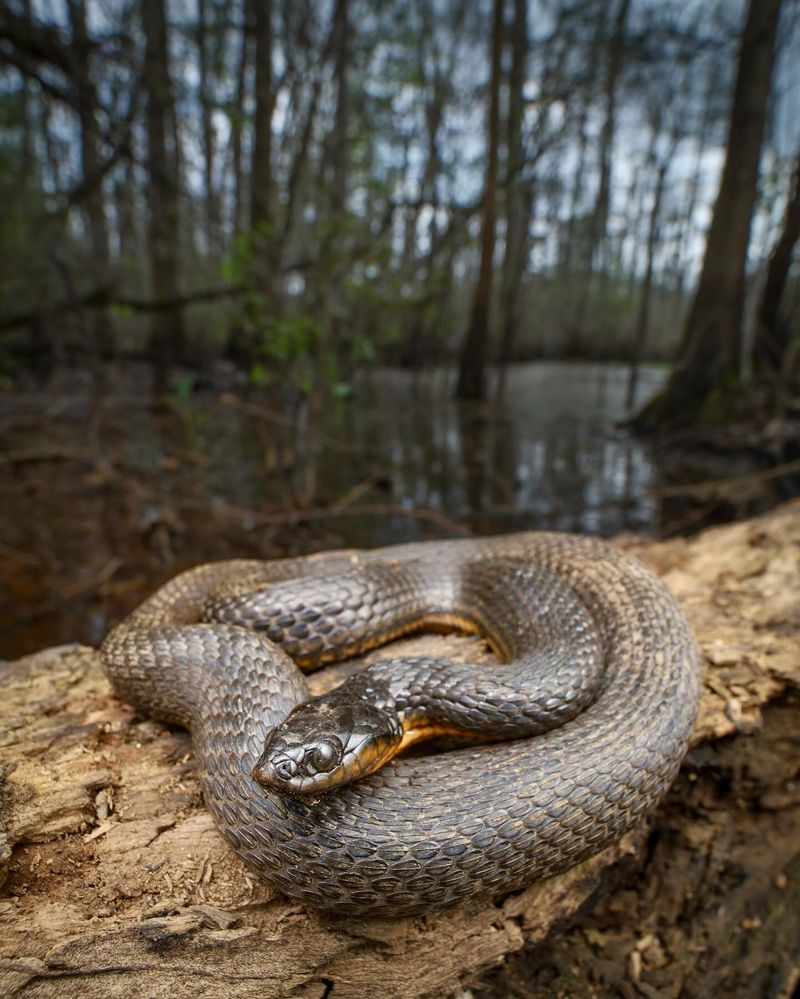
The Glossy Crayfish Snake is a sleek, non-venomous species found in the southeastern United States. Its glossy, brown scales offer a unique appearance as it glides through swampy waters.
These snakes are specialized hunters, feeding almost exclusively on crayfish. Their presence is an indicator of healthy crayfish populations and balanced ecosystems.
Conservation efforts focusing on habitat preservation are crucial to ensure these snakes continue to thrive, highlighting the intricate connections within aquatic environments.
Mangrove Saltwater Snake
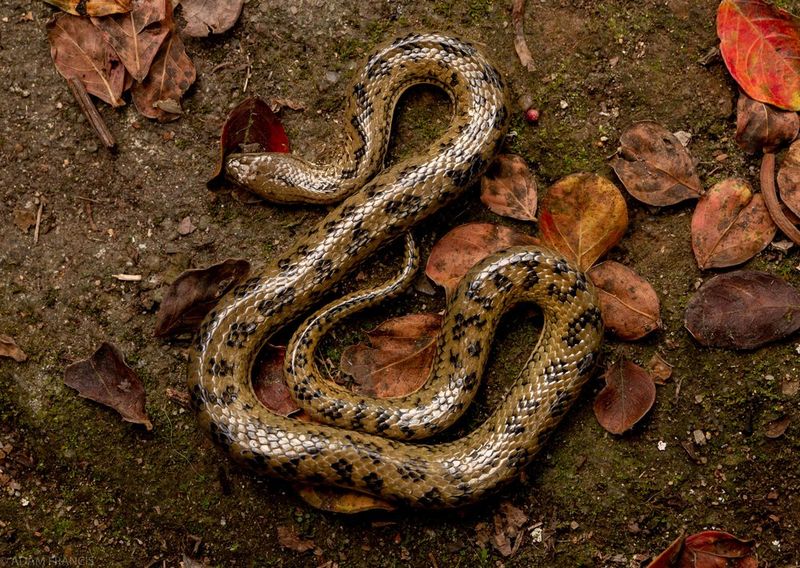
Imagine gliding silently through the tangled roots of a mangrove swamp—this is the realm of the Mangrove Saltwater Snake. Adapted to both salt and freshwater, this slender snake’s vibrant scale pattern mirrors the dappled light of its aquatic home. Its keen sense of movement in water makes it a formidable predator of small fish and crustaceans.
This snake’s ability to excrete excess salt through specialized glands allows it to thrive in brackish environments. Its elusive nature and unique habitat make spotting one a rare and exciting experience for nature enthusiasts exploring coastal ecosystems.

